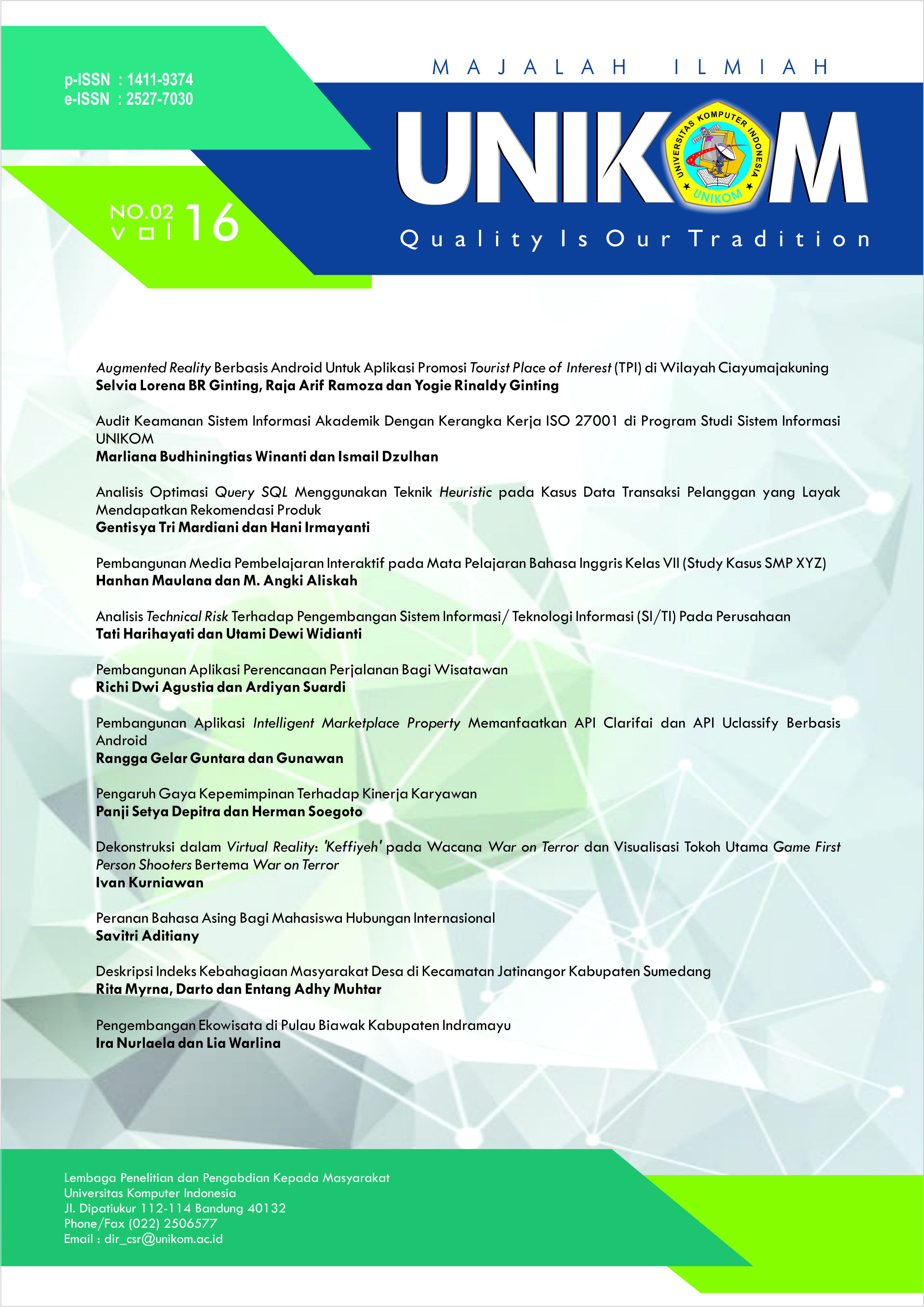DEKONSTRUKSI DALAM VIRTUAL REALITY: ‘KEFFIYEH’ PADA WACANA WAR ON TERROR DAN VISUALISASI TOKOH UTAMA GAME FIRST PERSON SHOOTERS BERTEMA WAR ON TERROR
DOI:
https://doi.org/10.34010/miu.v16i2.1362Abstract
Development of computer graphics technology has been able to bring virtual reality to society. Games as part of virtual reality having high potential in changing the order of the people living in a visual culture. Phenomena and discourse in everyday life are often used as reference in making games. In line with that contained in the public discourse, the current game with the theme of the war against terrorism have high enthusiasm. But in addition to the similarity of the many outstanding game storylines, it is interesting to observe the use of the keffiyeh as the property of U.S. and NATO soldiers. Given the meaning of keffiyeh as a symbol of Palestinian resistance and opposing American politics coexist. This paper will review the kaffiyeh as a deconstruction of the elements in the discourse of 'war on terror' and first person shooters games with the theme of the war on terror, through a design standpoint and social impacts caused by the theory of deconstruction by Derrida.
Downloads
Published
Issue
Section
License
Authors who publish articles in MAJALAH ILIMIAH UNIKOM agree to the following terms:
- Authors retain the copyright of the article and grant the journal right of first publication with the work simultaneously licensed under CC-BY-SA or The Creative Commons Attribution–ShareAlike License.
- Authors can enter into separate, additional contractual arrangements for the non-exclusive distribution of the journal's published version of the work (e.g., post it to an institutional repository or publish it in a book), with an acknowledgment of its initial publication in this journal.
- Authors are permitted and encouraged to post their work online (e.g., in institutional repositories or on their website) before and during the submission process, as it can lead to productive exchanges, as well as earlier and greater citation of published work (See The Effect of Open Access).




